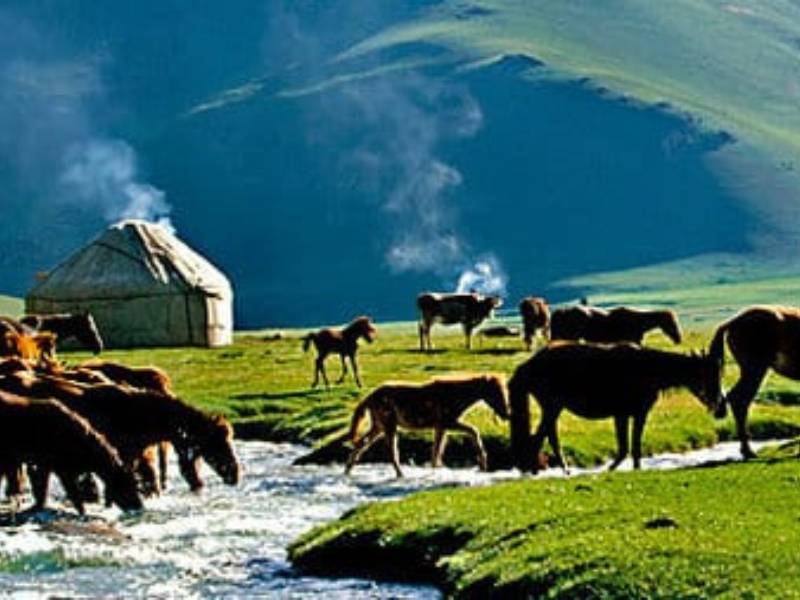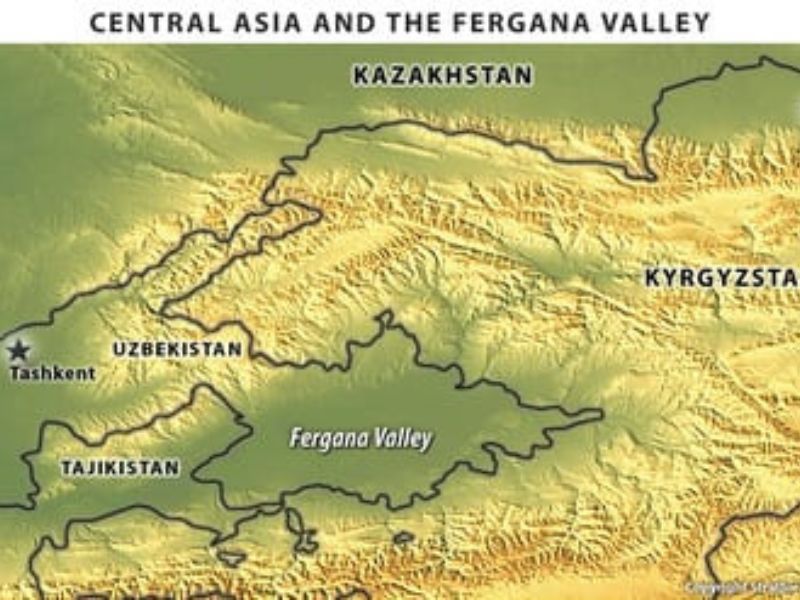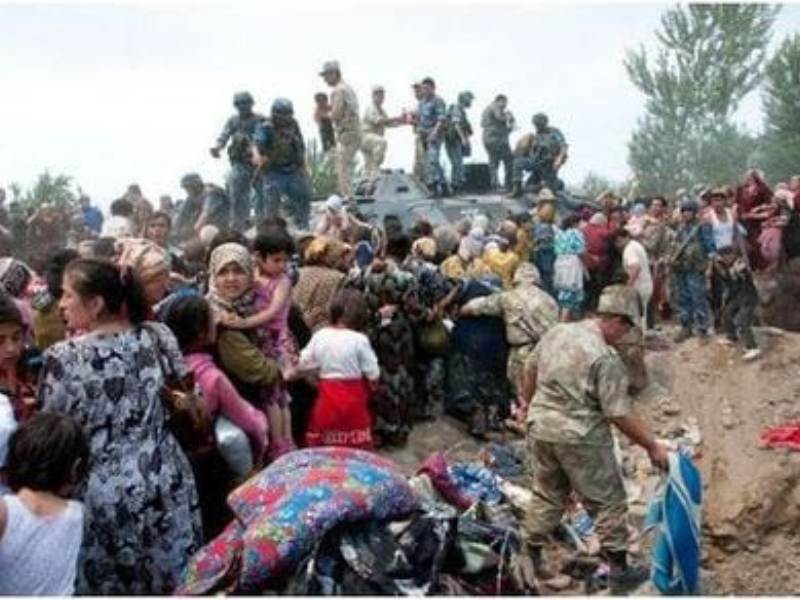Last Updated on 21 January 2025 by Cycloscope

Uranium mining in Kyrgyzstan, and radioactive waste at the border with the valley of Fergana. A serious issue for the geopolitical stability of the region
Kyrgyzstan isn’t certainly the most famous country in Central Asia. The few who know the location, primarily associate it with majestic mountain landscapes and nomadic culture. Entirely correct. Less well known are the problems that afflict it, common to most of the former Soviet republics: political instability, ethnic conflicts, and terrible environmental risks.
Among the latter, the dubious distinction goes to the abandoned uranium mines. The problems generated by these sites, son of the insane Soviet nuclear policy, however, are not only ecological, risking instead to become decisive in the escalation of the already tortuous ethnic and territorial conflicts.
Most of the old uranium mining sites are located around the Fergana Valley, a vast triangular plain that is one of the most fertile and densely populated areas of Central Asia. This article was written before we visited Kyrgyzstan. Check our full travel journal in this country to know more about our direct experience.
Political and ethnic division in Fergana Valley

Peacefully remaining a territorial unit for centuries, the valley of Fergana is now absurdly divided between Kyrgyzstan, Uzbekistan, and Tajikistan: “Boundaries in a zig-zag pattern. Streets are interrupted by Customs in the middle of nowhere, where young guards wear botch uniforms while rifles in hands, they control the comings and goings of a few farmers.
And then the enclaves. For example, Sokh, Uzbek enclaves in Kyrgyz territory populated exclusively by Tajiks. Or Kyrgyz regions inhabited only by Uzbeks and Tajiks. Or other combinations like that. A fantasy.
“…villages once common, now literally split in two by the border. School on one hand, market on the other, barbed wire and checkpoints in between” (cit swissinfo).
Water resources issue

With a diverse population, but pacified by centuries of mingling and intermarriage, the tension is mainly caused by the water resources supply. Organized on a regional scale during the Soviet years, the management of these resources is now the prerogative of individual states, with Kyrgyzstan having the knife by the handle.
The Syr Darya river and its main tributaries originate for the most part in Kyrgyz territory and the government often makes use for the production of hydroelectric power, leaving dry the portions of the valley belonging to Tajikistan and Uzbekistan.
In this context, it is not surprising if, among populations once joined, there may be conflicts that escalate into violence. In 1990, riots in Osh, about alleged injustices in the distribution of land, involved Uzbeks and Kyrgyz with more than 300 deaths. In 1999, an Islamic militia fighting with the Uzbek government abducted some Japanese citizens.
The story ended with the bombing by the Uzbek army of rebel camps in Kyrgyzstan, the release of the hostages, and new frictions between states.
In 2010, during the so-called Kyrgyz second revolution, the region was theater of further mass exodus, due to new episodes of violence. The tension remains high today, with troops on the border, inter-ethnic skirmishes, and a growing presence of Islamic fundamentalist groups.
But what role do they play in all of this the abandoned uranium deposits? A sad and very critical role, given the dangerous proximity of the site of Mailuu-Suu to the Syr Darya River basin.
Radioactive wastes and abandoned mines in Kyrgyzstan
From 1946 to 1968, the Mining and Chemical Combine in Zapadnyi Mailuu-Suu has produced and processed more than 10,000 tons of uranium, much of which was used for the nuclear program of the USSR.
“The first Soviet atomic bomb was created by ‘ Mailuu-Suu uranium, “said Torgoev Isakbek Asangalievich, a researcher at the Kyrgyz’s National Academy of Sciences. Radioactive waste was dumped around the city, near geologic faults, without regard for the hydrogeological conditions or the health of residents.
Today, 36 landfill sites are scattered throughout the area which contains a total of 1,960,000 cubic meters of radioactive mining waste. According to a 2006 study published by the Blacksmith Institute, an environmental NGO, Mailuu-Suu is found to be the third most polluted place in the world.
Landslides, earthquakes, and floods, regularly occur in the region and can cause serious radioactive contamination of the river Mailuu-Suu, which flows into the great Syr Darya river. A landslide in 1958 caused the release of more than 500,000 cubic meters of radioactive waste and contamination of vast areas of the Fergana Valley.
At Kara-Agac, a settlement built on a landfill for radioactive waste, the population is exposed to 10 mSv per year through radon gas and 10-30 mSv per year through contaminated food, not considering the impact of water contaminated by waste upstream.
Unaware of the dangers of radioactivity, the locals take the equipment in the old abandoned mines and sell them as scrap, risking not only their own lives but also the spread of radioactivity. A further problem is the use of rock from landfills as a building material for houses and roads. The premises are unsettling, and the future of the Ferghana Valley is increasingly uncertain.


